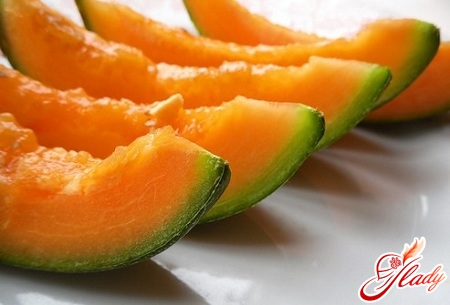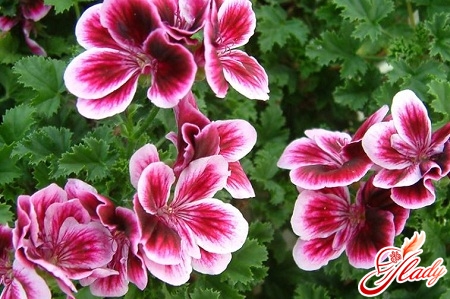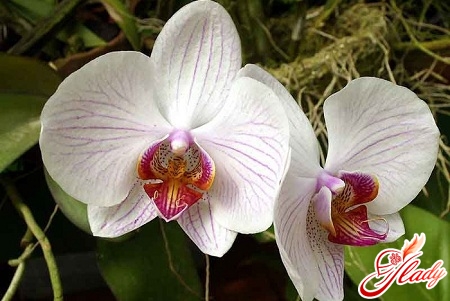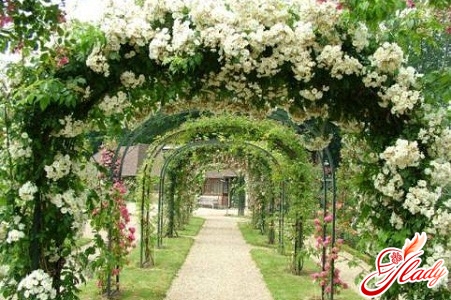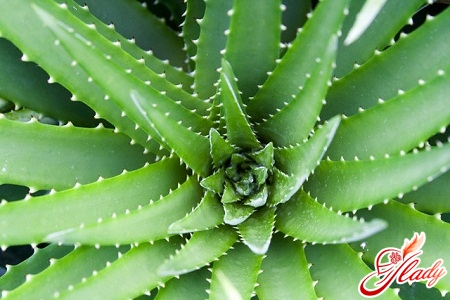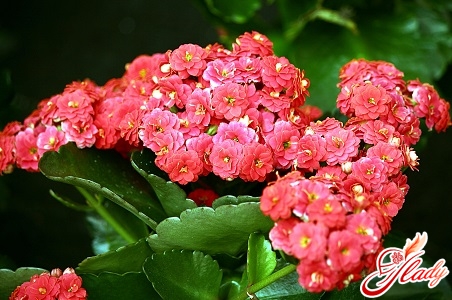 Kalanchoe or "green healer" (as it is called(a flower in the people) is known to everyone without exception. However, not many people know that there are also decorative types of this plant. And they gained their popularity due to their unusual flowers that delight the owner almost all year round. There are several types of flowering Kalanchoe. And today we will talk about some of them, and also tell you what kind of care these excellent flowers need. It is worth noting that the Kalanchoe family has about 200 species. They all have one distinctive feature - a dense stem and fleshy leaves. The shade of the leaves, as well as their texture, can be different. There are species with dark green and velvety to the touch foliage, and there are paler ones with a smooth surface. In nature, Kalanchoe can be found in Southeast Asia, South Africa and South America. In natural conditions, the plant grows up to 3-4 meters in height.
Kalanchoe or "green healer" (as it is called(a flower in the people) is known to everyone without exception. However, not many people know that there are also decorative types of this plant. And they gained their popularity due to their unusual flowers that delight the owner almost all year round. There are several types of flowering Kalanchoe. And today we will talk about some of them, and also tell you what kind of care these excellent flowers need. It is worth noting that the Kalanchoe family has about 200 species. They all have one distinctive feature - a dense stem and fleshy leaves. The shade of the leaves, as well as their texture, can be different. There are species with dark green and velvety to the touch foliage, and there are paler ones with a smooth surface. In nature, Kalanchoe can be found in Southeast Asia, South Africa and South America. In natural conditions, the plant grows up to 3-4 meters in height.
Kalanchoe Blossfeld
The most popular among amateur flower growersdecorative Kalanchoe. It grows as a small lush bush (30-35 centimeters in height), has smooth fleshy leaves of dark green color. Inflorescences of a soft pink shade amaze with their beauty and grace. In some cases, they even outshine the rose - the recognized queen of flowers. Due to its compactness, this plant is suitable for growing not only in winter gardens and greenhouses, but also in small city apartments and offices. Features of cultivation and care In principle, caring for decorative Kalanchoe is quite simple. It must be kept in a bright room, in the warm season it can be taken out to an open veranda or balcony. With all its love for light, Kalanchoe does not tolerate direct sunlight, so choose an appropriate place for it. If the plant is kept on a windowsill facing south, be sure to cover it from ultraviolet radiation at lunchtime. After buying a blooming Kalanchoe, wait until the buds have completely fallen off and transplant it into a new pot. A ready-made mixture intended for succulents is perfect for transplanting. You can also use self-prepared soil. To do this, mix equal parts of turf and leaf soil, as well as sand. When choosing a pot, pay attention to some details: it should be spacious enough (the circumference should match the size of the crown of the plant) and have holes in the bottom. Do not forget to put a drainage layer (1.5-2 centimeters) on the bottom of the pot. It is necessary to regulate the percentage of moisture in the soil and prevent root rot. After completing the transplant, water the plant and place it in a room with an air temperature of no more than 25 degrees. Subsequently, this type of Kalanchoe needs to be relocated every 2-3 years. During this time, the soil loses all the necessary qualities and can no longer provide them to the flower. The plant needs moderate watering - as the soil dries out. Fertilizers are applied every 2-3 weeks, using a special fertilizer for succulents. With the onset of cold weather (from October to February), Kalanchoe goes into a dormant period: it stops blooming and sheds its leaves. At this time, it must be placed in a cool place where the air temperature does not exceed 12 degrees, and protected from drafts. Watering, like fertilizing, is completely canceled. Possible diseases Successful care of a blooming Kalanchoe consists of maintaining the required air humidity and diffused bright lighting. Violating these conditions, you contribute to the appearance of mold and rot on the leaves and roots of the plant. The flower must be treated with special preparations that can be purchased at a flower shop. In the warm season, Kalanchoe can be attacked by aphids - the most destructive insect that affects almost all indoor flowers. There are two ways to combat aphids: wash the leaves and stem with a soap solution or spray with a preparation containing an insecticide. The first method will be effective only if the aphids have just appeared on the plant. If the damage is too noticeable, you will have to resort to a "chemical attack".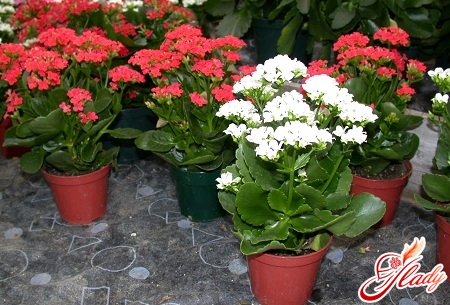
Kalanchoe Kalandiva
This species is artificially bred.hybrid. The progenitor was the plant described above. Both flowers are similar to each other, the only difference is that Kalandiva is slightly smaller (15-20 centimeters in height), blooms longer and produces buds not only of pink, but also of orange, red and yellow colors. Caring for this Kalanchoe is practically no different from caring for its progenitor. However, some nuances are still present.
- Lighting
It likes a lot of light in the room, and can even tolerate direct sunlight. However, at midday, when the ultraviolet rays are too strong, it is better to cover the plant;
- Air temperature
Tolerates temperature fluctuations without noticeable effectslosses (from 10 to 30 degrees). But still, it is best to grow the flower at a standard room temperature - 20-25 degrees. The plant does not like high air humidity, so it does not need spraying;
- Watering and fertilizing
Kalandiva is not demanding in terms of watering, becausestores moisture "in reserve" in fleshy leaves and stems. Water procedures should be arranged as the soil dries out completely. It is advisable to ensure that water does not get on the leaves and buds. Fertilizer should be applied only during the flowering period;
- Transfer
The transplant is carried out immediately after purchase.Later – as the plant grows (once every 2-3 years). Use a soil mixture for succulents or self-prepared soil – the same as for Kalanchoe blossfeldiana;
- Care during the cold season
Winter care for Kalanchoe Kalandiva is muchdiffers from summer maintenance. As soon as the flower sheds its last bud, its leaves will begin to fall off, and the stem will stretch out. This means that the plant is preparing for a dormant period. Many gardeners do not know what to do with the flower next, and simply throw it away. However, with proper maintenance, Kalanchoe will overwinter well and will be ready for development again. When the plant is completely bare, it is recommended to cut it almost to the root and place it in a cool, shaded place where the air temperature does not exceed 10 degrees. Once every two weeks, the flower can be watered, but not abundantly, but only slightly moistening the soil. Winter care does not imply the application of fertilizers. With the onset of spring, Kalanchoe will gradually gain strength for new flowering. Here we have considered what a decorative succulent is - Kalanchoe. As you have noticed, caring for flowering species is not difficult. We hope that our article will help you grow a healthy plant that pleases everyone around with fragrant buds.




